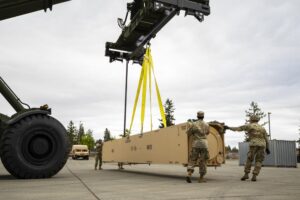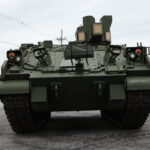
The Army has completed fielding of the ground equipment for its first prototype hypersonic weapon battery, the service said Thursday, a key step toward having the first operational capability ready in fiscal year 2023. Soldiers from the I Corps’ 5th Battalion, 3rd Field Artillery Regiment, 17th Field Artillery Brigade at Joint Base Lewis-McChord in Washington will now begin new equipment training this month after having received the full Long Range Hypersonic Weapon (LRHW) equipment minus the live hypersonic rounds. “Today…

 By
By 











